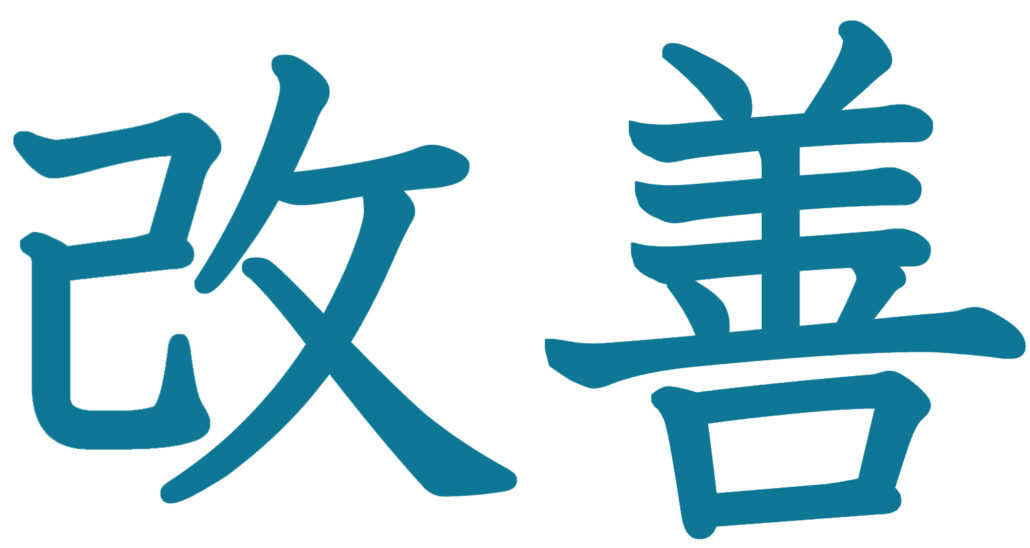In pursuit of constant improvement, Kaizen, a method born in Japan in the 1950s, offers an approach to continuous improvement that has revolutionized the industrial world. This concept, often translated as “change for the better,” is a fundamental pillar of the Lean methodology developed by Toyota. By relying on small, regular improvements, the method encourages the participation of all employees to sustainably optimize the quality of products and processes. Kaizen, as a method of “small steps,” embodies a philosophy of progression that ensures slow but effective development of industrial processes.
Table des matières
ToggleKaizen: The Key to Continuous Improvement
Kaizen is a Japanese philosophy that literally means “change for the better.” Also known as continuous improvement, Kaizen is a method aimed at optimizing productivity through small, regular changes. It originated in the 1950s, primarily initiated by the Japanese group Toyota as part of its Lean methodology.
At the heart of the Kaizen method are four fundamental principles. The first is the idea of constant improvement. Instead of seeking radical solutions, Kaizen encourages making progressive and continuous improvements. Each small change accumulates to produce significant long-term results.
The second key principle is the involvement of all personnel. In the Kaizen approach, every employee, regardless of their hierarchical level, is encouraged to propose improvements. This collective empowerment ensures a sharing of ideas and stimulates a participatory and innovative work environment.
Thinking long term is the third foundation of Kaizen. It prioritizes solutions that, although sometimes slower to implement, promise lasting gains. This approach advocates for a strategic vision that goes beyond short-term profits.
The last principle is immediate action. The swift execution of new ideas, even on a small scale, is essential. The goal is to avoid analysis paralysis by acting promptly yet cautiously on improvement proposals.
Another structural tool of Kaizen is the 5S method, an organized system in five steps aimed at establishing and maintaining a functional and efficient workspace. Each “S” represents an action: Seiri (sort), Seiton (set in order), Seiso (shine), Seiketsu (standardize), and Shitsuke (sustain).
Modern companies, especially those engaged in lean manufacturing, frequently integrate the Kaizen method for its effectiveness in optimizing processes. Kaizen also applies concepts such as operational efficiency and production chain management, demonstrating its versatility.
Ultimately, Kaizen is often described as the method of small steps, a powerful tool that fosters innovation through experimentation and participation. It is a key element for maintaining the competitiveness of companies in an increasingly demanding and forward-looking market. By promoting a culture of continuous improvement, Kaizen prepares organizations for the challenges of tomorrow while enhancing their ability to deliver exceptional quality products.

FAQ on Kaizen: The Key to Continuous Improvement
Q: What is the Kaizen method?
A: Kaizen is a Japanese concept that literally means “change for the better” and is often translated into French as “continuous improvement.” This method aims to optimize productivity through small, regular improvements.
Q: Where does the Kaizen method come from?
A: Kaizen originated in Japan in the 1950s, particularly within the Toyota Group, and is part of the Lean methodology.
Q: What are the fundamental principles of Kaizen?
A: The four key principles of Kaizen include continuous improvement, involvement of all personnel, long-term thinking, and taking action on change opportunities.
Q: How to apply the Kaizen method in a company?
A: To apply the Kaizen method, it is important to progress in small steps, involve all employees, master specific tools like the 5S, and integrate a cycle of continuous improvement.
Q: What is the 5S method in relation to Kaizen?
A: The 5S is a tool of Kaizen that refers to five steps to improve and maintain the workplace in an orderly and effective manner: Seiri (Sort), Seiton (Set in Order), Seiso (Shine), Seiketsu (Standardize), and Shitsuke (Sustain).





